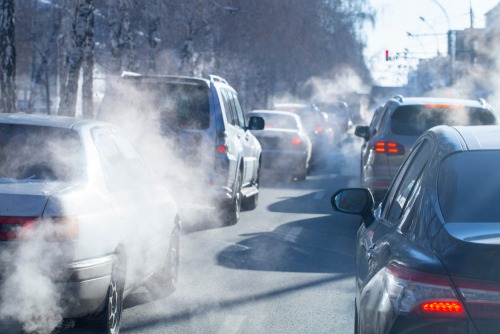
On Wednesday, the U.S. Environmental Protection Agency (EPA) announced new proposed federal emission standards for vehicles, standards it said would accelerate the transition to clean-transportation.
The new standards would avoid nearly 10 billion tons of CO2 emissions, the agency said, the equivalent of more than twice the total U.S. C02 emissions in 2022. Additionally, the new standards would save Americans thousands of dollars over the lives of vehicles and reduce America’s reliance on imported oil.
“By proposing the most ambitious pollution standards ever for cars and trucks, we are delivering on the Biden-Harris Administration’s promise to protect people and the planet, securing critical reductions in dangerous air and climate pollution and ensuring significant economic benefits like lower fuel and maintenance costs for families,” EPA Administrator Michael S. Regan said. “These ambitious standards are readily achievable thanks to President Biden’s Investing in America agenda, which is already driving historic progress to build more American-made electric cars and secure America’s global competitiveness.”
The new standards include more stringent emission standards for criteria pollutants and Greenhouse gases, changes to certain optional credit programs, durability provisions for light-duty electrified vehicle batteries and warranty provisions for both electrified vehicles and diesel engine-equipped vehicles.
For heavy-duty vehicles, the EPA is proposing standards that include stronger CO2 standards for vehicles manufactured in 2027 that go beyond its current standards, as well as proposing an additional set of CO2 standards for heavy-duty vehicles manufactured in 2028 and beyond.
The American Trucking Association said it would support standards based in science.
“The trucking industry starts at ‘yes,’” ATA’s president and CEO Chris Spear said in a statement. “We share the goal of reducing greenhouse gas emissions and improving fuel efficiency and believe any regulation must be practical, achievable, and based on sound science. Our members have a long history of adopting the cleanest emissions technology on the road today and are making the necessary investments to support a decarbonized future.”
However, it said while the standards are directed at manufacturers, it is the end-users of the equipment who will determine their level of success.
“The Phase 3 standards must take into account the complex challenges and operating conditions facing motor carriers as we manage the transition to a zero-emission future while simultaneously moving more than 72 percent of the economy’s freight,” Spear said. “As we review the proposed rule, ATA will remain engaged in the regulatory process to ensure the agency arrives at a regulation that has realistic equipment adoption timelines, is technologically feasible, and will not cause additional inflationary pressures if finalized.”
A hearing on the proposed standards will be held on May 2 and 3, with the possibility of a third day of hearings on May 4, if the number of people testifying justifies the additional day. Registration to testify will be open until the day of the hearings, but the EPA requests anyone interested in testifying to pre-register by April 26.